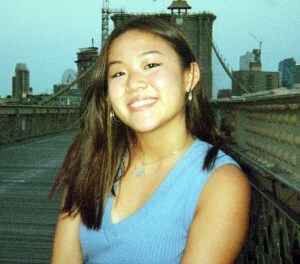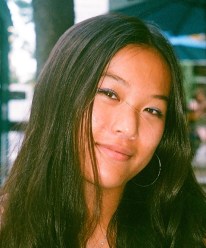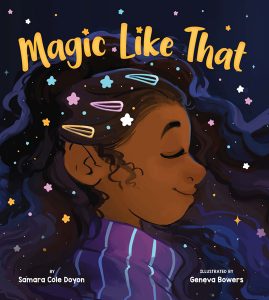In this blog post, Lee & Low summer interns Dylan and Kiana Low discuss the power of natural hair and what is important to consider when parents and educators use books like Magic Like That to teach about the versatility of natural hair and Black hairstyles.
Throughout history, afro-textured hair has been a source of pride, culture, and even survival.
In pre-colonial Africa, Black hairstyles signified one’s identity, status, or even condition– Tayo Bero writes that there were hairstyles for mothers about to give birth or wives waiting for their husbands to return from war. [1] In Colombia, Black enslaved women used hair braiding to relay messages or provide maps for escape routes. [2] During the 1960s and 1970s, the Black pride movement oversaw the fearless reclamation of natural hairstyles, especially the Afro. Hair has been a symbol of strength and resistance throughout American history.
That said, there still exists large amounts of stigma around natural, afro-textured hair and hairstyles. For parents, teachers, and loved ones trying to instill pride in their children, books can often provide a source of inspiration and love of oneself that young readers can carry with them into their lives.
Why teach books focusing on the importance of natural, afro-textured hair?
-
Creating spaces for young Black children to appreciate their hair
-
Actively fight stigma about natural hair by sharing books that highlights hair as a source of pride and individuality within the Black community
-
Reading or teaching young children books about natural hair raises awareness and conversation that can be brought into discussion with parents, friends, or peers
-
For non-Black communities, books about afro-textured hair work to fight common misconceptions due to widespread under-representation
Questions to Consider when Creating a Text Set about Natural hair:
-
Is there a variety of formats and genres?
-
Do you have stories and experiences written at a range of reading levels?
-
In addition to the range of characters, historical figures, and community features, who are the authors and illustrators? What is their expertise in telling these stories?
-
Do the books provide representation of different hair types and Black hairstyles?
The Ultimate Goal:
We want to contribute to the movement of Black pride and how it is manifested through afro-textured hair and Black hairstyles. We also want all communities to recognize its beauty and symbolic meaning. Magic Like That appreciates and cherishes young Black girls and shows readers that there isn’t just one way for hair to be beautiful.
Other Children’s Books about Natural Hair:
-
Hair Like Mine by Latashia M. Perry, illustrated by Bea Jackson
-
Don’t Touch My Hair by Sharee Miller
-
Bedtime Bonnet by Nancy Redd, illustrated by Nneka Myers
-
I Love My Hair! by Natasha Anastasia Tarpley, illustrated by E.B. Lewis
-
Bippity Bop Barber Shop by Natasha Anastasia Tarpley, illustrated by E.B. Lewis
Questions to Consider when reading Magic Like That:
-
How do the illustrations contribute to the descriptive language in the book?
-
What have you learned about the different hairstyles from this book?
-
Why is this topic important to learn about?
-
How is the symbol of hair within the Black community important in historical context?
-
How can you as a reader work to eliminate the stigma regarding natural, afro-textured hair?

Dylan Low was one of Lee & Low’s summer interns. As a New York City high school senior, she enjoys playing volleyball, being with friends and family, and baking. She looks forward to future work with Lee & Low.

Kiana Low was Lee & Low’s summer literacy intern. Kiana is a recent graduate from the High School of American Studies at Lehman College, and a future student at Wesleyan University.
[1] https://www.cbc.ca/radio/ideas/tangled-roots-decoding-the-history-of-black-hair-1.5891778









